Every day, dozens of emails land in your subscribers’ inboxes. It’s not surprising that many of them will stop reading your emails, especially with so much competition from other brands.
There are many reasons people stop engaging with the brands they subscribe to. The campaigns may not be relevant to them, they might have signed up for a free trial but not found value in it, or perhaps they just don’t feel like opening anything related to sales or promotions.
While it might not seem like a big deal at first, low email engagement rates have a significant impact on your brand’s ability to reach customers and close sales.
So how do you keep your brand from becoming a casualty of low engagement rates?
By running re-engagement campaigns that aim to win inactive subscribers back to your brand.
Let’s have a look at how to do that, starting with a quick look at why you should run a re-engagement campaign.
Page Contents
What is the purpose of a re-engagement campaign?
Before you run a re-engagement campaign, you need to understand who you’re sending it to and why. Are you trying to win back former customers who didn’t have a good experience with your product, or are you trying to reach out to people who submitted their email addresses to get free content? You will send different types of content to each type of user.
A re-engagement campaign’s purpose is to rekindle that relationship you once had with your subscribers. For those who had a negative experience with your brand, you’re trying to make it up to them offering a more positive experience. For those who haven’t engaged with you lately, you’re reminding them that your business has a lot more to offer them.
What are the benefits of a re-engagement campaign?
John Gattorna of Macquarie Graduate School of Management famously reported that 68% of customers stop engaging with brands because they feel the business doesn’t care about them. When you run a re-engagement campaign, you not only show your subscribers that you want their business and bring them back into your digital marketing funnel. You also show them that you care enough not to let them fall through the cracks.
Aside from showing concern for your subscribers, re-engagement campaigns also benefit your brand by keeping your promotional emails away from “spam” folders. ISPs and email providers mark email addresses with low engagement rates as low-quality senders, which results in these messages being marked as spam more often. This affects your ability to reach those subscribers who might be interested in your products and services.
5-step process to running a re-engagement campaign
If you want to re-engage inactive subscribers, you can’t just send them a random email every now and then. If your campaign isn’t properly executed, you risk turning them off altogether. You need to plan and carry out your re-engagement campaign carefully.
Here is a five-step process that will help you re-engage your subscribers and send your conversion rate soaring.
Step 1: Identify inactive subscribers
The first thing you should do in a re-engagement campaign is to identify inactive subscribers. An inactive subscriber is anyone who hasn’t clicked, opened, responded, or acted on any of your emails in the past few months.
There are three types of inactive subscribers:
- Dormant – these subscribers were once very active and engaged with your brand but seem to have cooled off to the point where you’re not sure whether they’ll be active again.
- Zombies – these subscribers haven’t opened or clicked on your emails at all for the past six to twelve months. While there is a chance of getting them to engage again, the odds aren’t in your favour.
- Ghosts – these subscribers joined your list then vanished into thin air. It’s possible that they didn’t even open your welcome email. They gave you their email address because they needed something from you, such as access to a free piece of content, but otherwise never had any real intention of engaging with you.
Your email marketing solution or CRM should have some sort of tool for identifying these subscribers. For example, with EmailOctopus you can segment your subscribers based on their recent activity and whether they’ve opened or clicked a campaign within the past seven, 30 or 90 days.
You need to take this step seriously because it will determine the type of email you’ll send in the next steps.
Apple’s Mail Privacy Protection and open rates
The release of Apple iOS 15 and Mail Privacy Protection means that some of your subscribers may be marked as an open, even when they have not actually opened your emails.
This does mean you may miss some inactive subscribers when running a re-engagement campaign. But it’s not the end of the world as it will only affect a small portion of your list.
For more information, read what impact Apple’s iOS15 is having on email marketing.
Step 2: Send a reconfirmation email
Sending a reconfirmation email is something you should do the moment you see that a subscriber has stopped responding to your messages or otherwise engaging with your business. This is where you should put your best foot forward and try to convince inactive subscribers to come back. You could consider this your last chance to make an impression on them.
Your messaging could mention how long it’s been since they last opened one of your emails and offer a discount for their next purchase. You may also ask for their feedback and find out why they have been inactive. This feedback could help you create better email content and build an improved version of the product in the future.
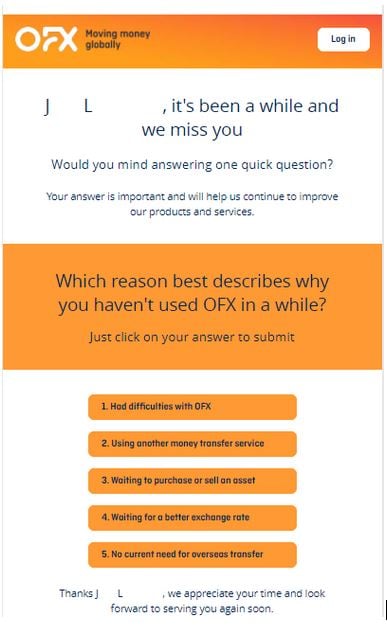
The above email from OFX notes that the subscriber hasn’t responded to any of their messages or used their product for some time, then invites the subscriber to answer a quick question. The answers will help dictate the kind of content OFX will send in the future. For example, if they choose option 4 (waiting for a better exchange rate), OFX may send email updates about trends that affect exchange rates. If they indicate that they had difficulties with OFX, the brand might send content to help them get the most out of the product.
Aside from getting valuable customer feedback, the fact that the user opened the email and clicked on one of the buttons is enough to convince the user’s email provider that OFX isn’t a low-quality sender. This helps their emails avoid going into the spam folder in future.
Step 3: Analyse your campaign results
After you run your re-engagement campaign, you need to measure its effectiveness. Most email marketing platforms have reports that show the following metrics:
- Sent emails
- Delivered emails
- Opened emails
- Unique opens
- Average open rate
- Unsubscribes
- Click-throughs
The definition of re-engagement success depends on your niche. Averages of 5-6% are common, and a 10% re-engagement rate is considered unusually high. Therefore, if 5-10% of your inactive subscribers come back, resume engaging with your brand, or make a purchase, you may consider your re-engagement campaign a success.
Step 4: Say goodbye to subscribers who don’t engage
What happens when the other 90-95% of inactive subscribers don’t respond or open your re-engagement email? It might be time to let them go.
While email marketing is among the cheapest ways to reach out to potential customers, these inactive subscribers do your business more harm than good. If they are no longer in your sales funnel or interested in your offer, there is little point in continuing to engage with them.
When your emails sit untouched in a subscriber’s inbox or get deleted immediately, it affects your email marketing performance overall. The email address you use to send your engagement emails is marked a potential source of spam, which reduces their chances of being seen by everyone on your list – including those actively interested in your offer. Letting go of inactive subscribers helps you prevent this problem.
You can send one final email to let the subscriber know you’re going to remove them from your list. If they don’t want to stop receiving your communications, this gives them one last chance to let you know. Here’s an example:
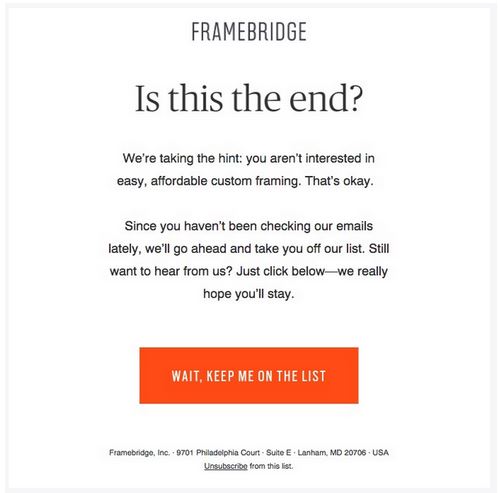
Aside from helping with your email deliverability problems, saying goodbye to inactive subscribers will mean you spend less of your email marketing budget on subscribers who are not interested. Which allows you to focus your campaigns on those who are. This helps improve your open and click-through rates and the overall ROI of your marketing efforts.
Step 5: Check if your content is effective
As you run and analyze your re-engagement campaign, revisiting your older email content will help you create more effective campaigns in the future. Go back to the emails you send in the first 90 days after a subscriber joins your list. It’s important to communicate effectively with new subscribers as this sets the tone for the rest of their customer life cycle.
Did your content actively invite them to engage with you?
Was your content appropriate for the market you’re trying to target?
Did it make them feel comfortable about your product?
Conversely, did you try to sell something right away, make them feel uncomfortable, or send content that was tone-deaf to current events?
It’s good practice to review and change up your email drip campaigns once in a while. There’s nothing that invites subscribers to engage with a brand like an email campaign that addresses their needs and makes them feel glad that they subscribed.
5 tips that’ll help you get the most out of your re-engagement campaign
Your re-engagement email campaign will be more effective if you follow a set of best practices. Here are some useful tips we’ve gathered over the years that will help you boost your re-engagement rates.
Segment your subscribers
A more targeted email campaign yields better results. Dividing your inactive subscribers into segments helps you create email content that deals with their pain points and addresses their interests more directly.
You might segment your subscribers according to the type of content they’ve previously interacted with, the products they’ve purchased or viewed, or how long they’ve been inactive. By creating subscriber segments and sending them the most appropriate content, you increase your chances of getting them to engage with you again.
Revisit your email subject lines
Your subject lines are the first thing your subscribers will see. So if you want them to open your emails, you need to write email subject lines that capture their interest.
You can use certain words that pique users’ interest and curiosity, such as “sale”, “offer”, “new”, or “update”. You may also appeal to the subscriber’s fear of missing out by saying that an offer is available for only a limited time, like this example:
You could also try using the recipient’s name in the email subject line. This makes them feel like you are speaking to them specifically. Emojis can work well, too. When you use appropriate emojis wisely, they lead to higher open rates.
Offer useful incentives
A re-engagement email campaign is also a good time to send incentives and offers to draw your inactive subscribers back in. There are many things you can offer to your subscribers, including free content, a special discount, or a coupon for future purchases.
Here’s how Pottery Barn did it:
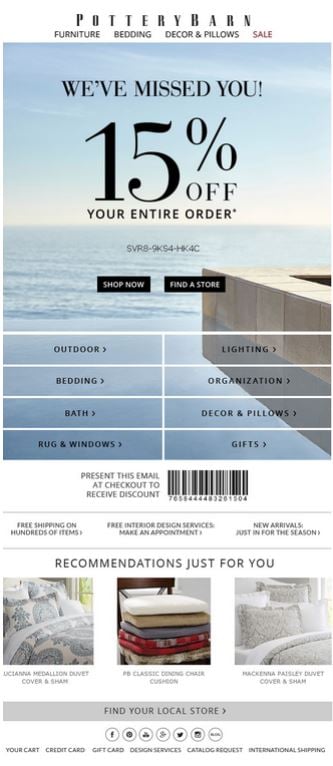
You need to remember that these incentives should be useful and related to the product you’re promoting. If you’re marketing a business proposal tool, a free proposal template might be useful, while a month’s free access to exclusive content could attract subscribers to your news site or blog. An ecommerce website might be able to re-engage inactive subscribers with substantial discounts on its most popular products. And so on.
Ask for feedback
A re-engagement email is not just your chance to reconnect with inactive subscribers. It’s also a good opportunity to find out what works and what doesn’t. Besides using data from your email marketing software or CRM, asking your subscribers to complete a short Google Forms survey will give you a better idea of customer sentiment.
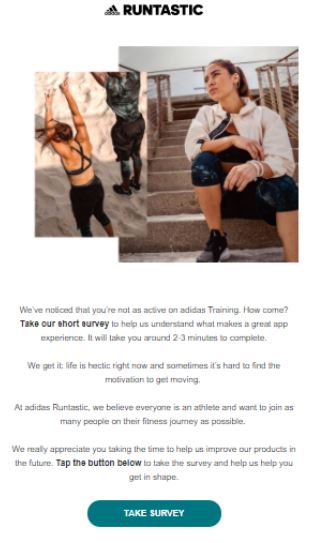
One additional benefit of these surveys is that they give your subscribers a sense of ownership over your product and marketing content, especially if the survey asks them what they want to receive from you. Once your subscribers see that you’ve adjusted your content strategy for them, they are more likely to engage with your campaigns.
Show your customers what they’ve missed
Your customers might have become inactive because they’ve gotten what they needed from you. This is particularly common among SaaS businesses, where users sign up for email newsletters just to access free software trials.
But if you manage to convince your customers that there’s a lot more to your product than what they’ve seen so far, your chances of re-engagement get higher.
Here’s how OptiMonk did it:
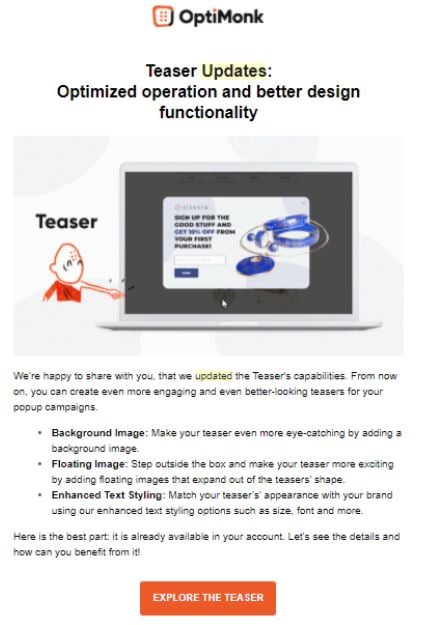
Include an eye-catching call-to-action (CTA) button to entice your subscribers to click through. A good CTA can push your customers to explore your product further and make it easier for your brand to re-engage with subscribers.
In the above example, the use of the word “teaser” also creates mystery and entices the subscriber to find out more. Once they’re on your site or landing page, you can use a real-time chat plugin to engage and interest them in your offer even further.
Wrapping up
While you can’t avoid subscriber inactivity, the way you handle it can mean the difference between a high-engagement email list and emails that sit in your subscribers’ inboxes unread. A re-engagement email campaign is a chance to try new approaches to your email marketing and to get to know your subscribers and their preference better.
Don’t be afraid to try out new combinations of subject lines, incentives, and updates until you find the one that works.
All the best of luck with your re-engagement campaign!
About the author
Matt Diggity is a search engine optimisation expert focused on affiliate marketing, client ranking, lead generation, and SEO services. He is the founder and CEO of Diggity Marketing, The Search Initiative, Authority Builders, LeadSpring LLC, and host of the Chiang Mai SEO Conference.

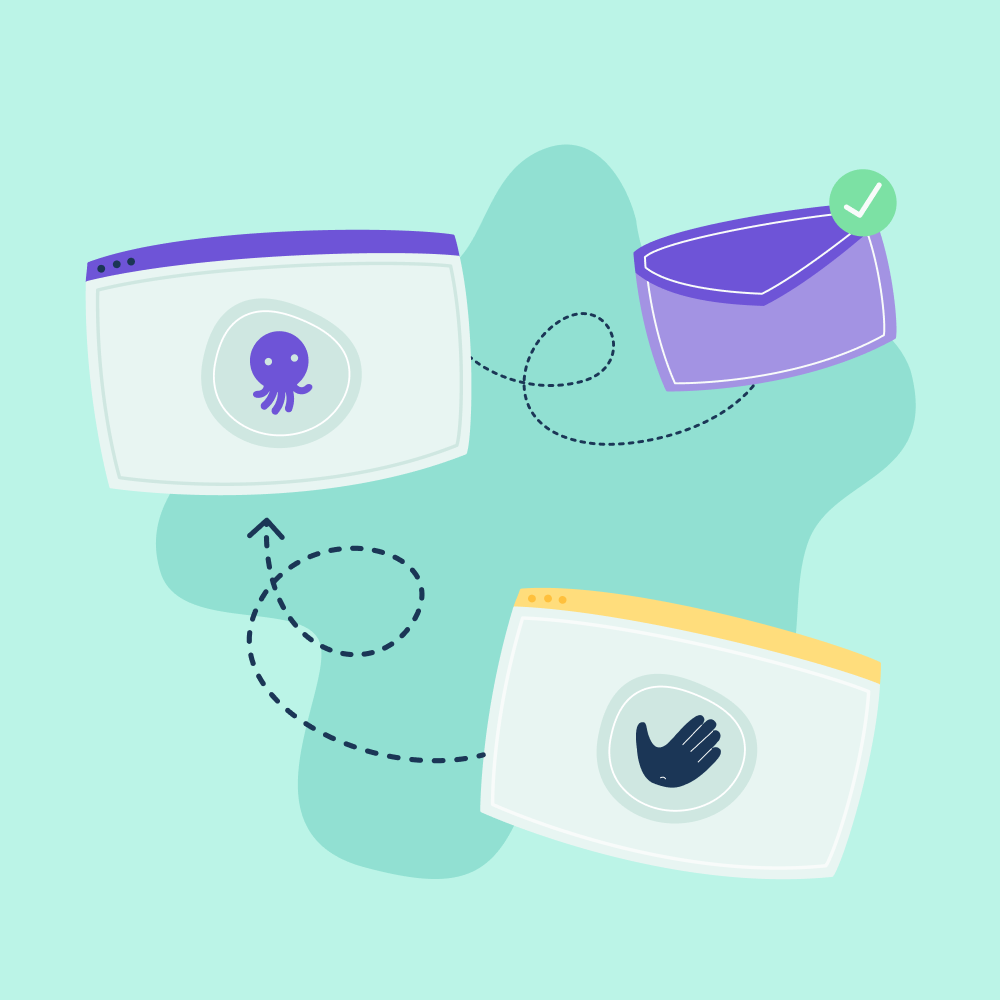
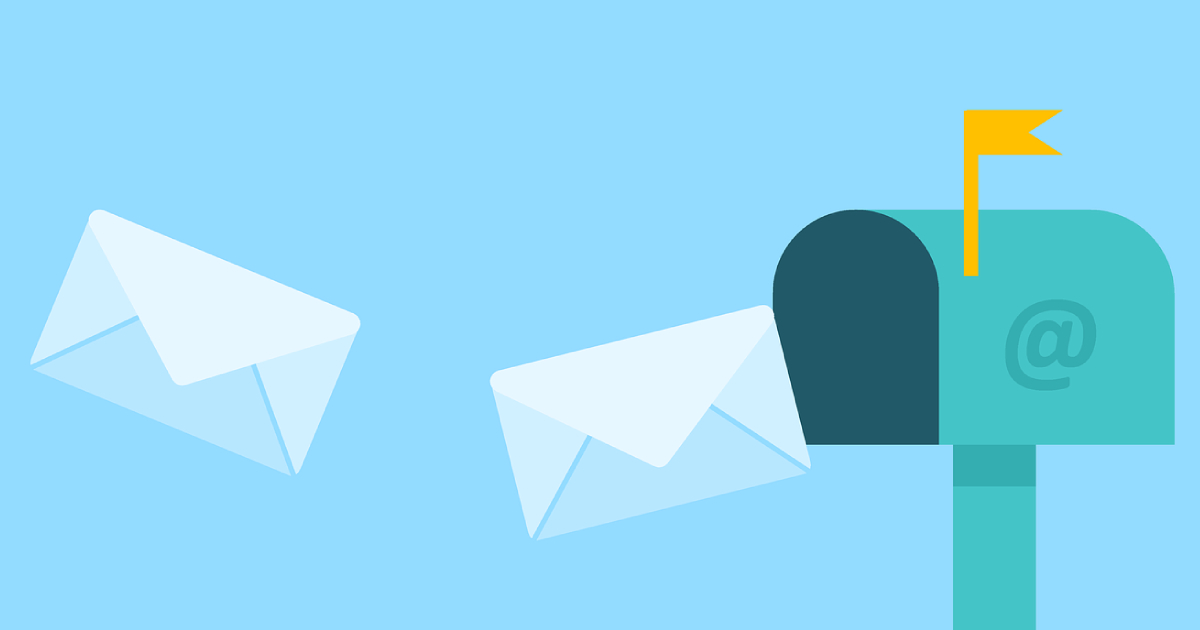
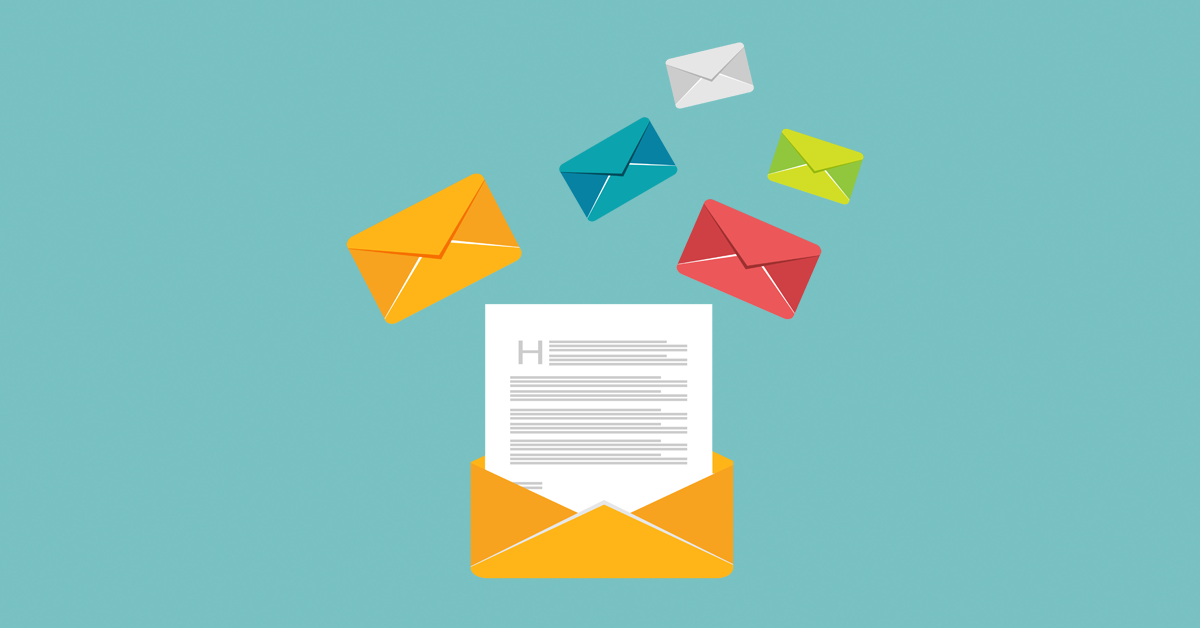

No Comments
Leave a comment Cancel